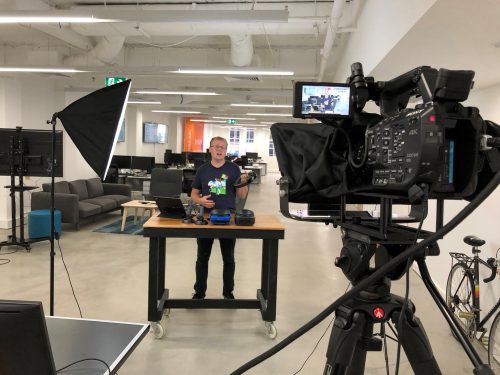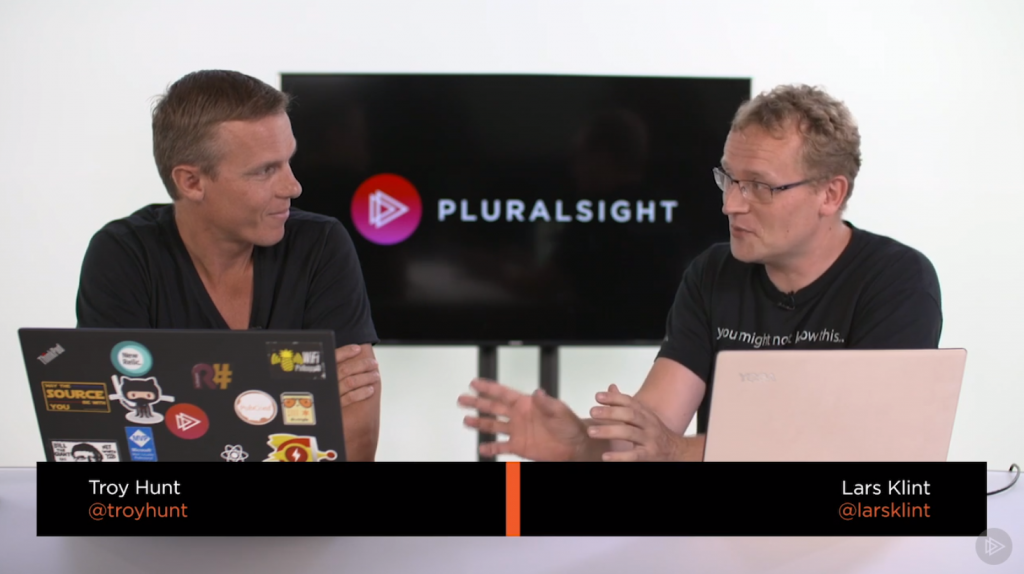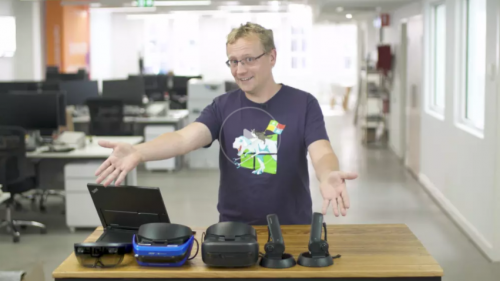Some thoughts on what the last 10 years of organising DDD Melbourne has taught me, when it comes to inclusion. Enjoy (and learn).
Five Reasons to Choose Cloud Computing
I have been working with some form of cloud computing for the better part of 10 years. As a developer I used Azure worker roles and virtual machines many years ago, and now, working for A Cloud Guru, I spend my working week teaching over a million students how to use Azure and get those skills certified.
And while I interact mainly with people who are already in the clouds of computing, I was thinking. What make people choose a cloud computing platform, like Azure, in the first place. I have five main reasons I normally share with people asking why choose cloud computing.
Watch below to get a free virtual kitten.
Creating Content with Impact
It has been over a year since I posted on this site. Wow. Time flies. In that time I have created a ton of video and course content for A Cloud Guru, which has taught me a lot about what works and what doesn’t when it comes to creating content.
At the same time I have set up a new home office, and decided to try out my new lights, magical blue wall and new space in general. Hence the video below on creating content with impact.
I know that the audio is still a bit off, and I need a proper teleprompter. All that is to come over the next little while.
A New Chapter – Full Time Authoring
Today marks a new chapter in my professional career. It isn’t a new start. It isn’t a career change. It isn’t a new book in the life of Lars. However, it is tremendously exciting, and even more so as I haven’t been able to talk about it until now.
From today I am a full-time author with Melbourne based A Cloud Guru (ACG). Some of you might have heard of them especially in the AWS world. They are an up and coming online learning content provider, that has a focus on not only high quality content, but also entertaining material that won’t make you fall asleep.

Enterprise Angular Apps – Simplifying Complexity
If there is one thing I have learnt about Angular and the programming paradigm it dictates, it is that you either hate it or love it. Developers seems to be very much one way or the other. And ex-boss of mine has even told me that “I am making a mistake by not doing everything Angular”. I don’t agree. I have always been about “the right tool for the right job”. Which is why I am very happy that my mate Duncan Hunter can guide me through the jungle of Angular and associated libraries. A little while back we released a Pluralsight Play by Play on using the ngrx library with Angular, and it has been extremely popular.
And now we are back! Duncan put it to me that enterprises are struggling to use Angular in any meaningful way, as their code base is often complex and has a ton of inter-dependencies. And of course he didn’t bring a problem without a solution. In this brand new course we go through the steps of building enterprise grade applications with the Nx library for Angular. We look at managing multiple repositories, creating a new Nx workspace, creating new apps and libraries, and how we can use it with ngrx as well.

The course is available right now on Pluralsight.
Finding Motivation to Rise Above
Motivation is something that can’t be bought, can’t be measured and can’t be passed on if you have a surplus. Yet, it is such an important part of getting our tasks done and if we are particularly motivated, we can truly excel. But motivation is often hiding. It is sitting under the bed refusing to come out. I have been exploring ways to get motivated and stay motivated for years, and this article shares some of the ways that work for me. First published on gooroo.io.
Last month my good friend Stephen Haunts released his new book on beating procrastination and getting focused. My first thought was “I definitely need to read this”, because I often struggle with getting enough done in the day. Part of it is the constant distractions from messages, people, other things to do, snacks to eat and many other things. Part of it is just finding the motivation to finish the next Pluralsight course, chase the lead for that new client, read that article on technical subject X and get through the day’s to-do list.
My second thought was that this is probably how a lot of people feel and react. Finding that motivation to take our lives one step further and create something new and useful is difficult at the best of times. As humans, we naturally gravitate towards the low hanging fruit. We do the tasks that provide a quick result and fast gratification. There is nothing wrong with that, but we need to fill our time and find room to do the long term, complex and difficult tasks too. It is the only way we can rise above the rest.

Using Modern Web Security Patterns
This notion of “being secure on the web” is a statement that has many nuances and flavours. When a client of mine or learner through Pluralsight asks about web security and what they should do, it is never a black and white answer. It is always “it depends”, because it really does. Finding a way to implement the security measures that make sense for a particular product or project is never that simple.
However, there are a bunch of things you can do to move your website towards that “more secure” end of the security spectrum. These modern patterns include
- Subresource integrity (SRI) checking
- Content security policies (CSP) and exceptions
- CSP reporting
- Cross site scripting auditing (XSS)
- Certificate authority authentication (CAA)
- Http Strict Transport Security (HSTS)
That is a lot of acronyms in an industry that don’t need any more (really, we don’t). These tools and techniques are crucial in being on top of your web security, which is why my good mate Troy Hunt and myself sat down in February 2018 and recorded a new Pluralsight course.
This course is exceptionally relevant if you are developing any kind of web project, whether fresh or legacy. Most of the elements in this course can be used on any web project and retrofitted with little investment and great benefit. And it is only 1.5 hours, so perfect for your commute.
Introduction to Quantum Computing with Q#
In the last 3 months I have been studying more and more about quantum computing, spoken to members of the Q# team at Microsoft, recorded a new Pluralsight Play by Play course and recorded a new episode of The Future of Tech. I find the area both incredible mystifying and very rewarding every time I understand a new concept. The below article is a quick intro to starting with Q# and Visual Studio and was first published on gooroo.io.
For the past 47 years since Intel released the 4004 in 1971, computing has been following very much the same path. Microprocessors based on transistors and bits switching between 0 and 1 have been the cornerstone of every single consumer and commercial computing experience since then. While we rely on computers for increasingly more tasks, there are calculations that just aren’t feasible with traditional computing, and this is where quantum computing can prove both superior and immensely powerful.

Quantum computing and quantum mechanics has been topics of research for over 100 years, since Max Planck release his Quantum Hypothesis in 1900. Albert Einstein has used quantum theory to explain several hypothesis and many more scientists since expanded and corroborated the theories. Today we have quantum computing which promises dramatic improvements for certain types of problems.
Conference Speaking – Submitting the Right Proposal
Over the last few years I have spoken at a large number of conferences, from small meetups to really big developer conferences. Some talks I get invited to, some talks I know the organiser and agree on a talk, and most are through call for papers (CFP). I have been on the agenda committee for NDC Sydney for a couple of years, so I understand exactly what the people are looking for and how the selection process work, at least for that conference. It is not a straight forward process once you consider all the factors, and a single tweet from a fellow speaker made me consider what the process is.
Do you submit once you have just the idea? The outline? Or only once you’ve worked out the full content?
— David Wengier (@davidwengier) March 31, 2018
This is a great question, if you are new to conference speaking, or just aren’t sure how the process work. There aren’t a black and white approach to this, but let me attempt to fill in some of the gaps.
Hosting a New Tech Show – The Future of Tech

Most people that spend any time with me, know that I like to talk to lots of people, I really love to present tech topics, and my personality (for better or worse) often comes through like a flood. Over the last few years, speaking has taken me around the world, I have created 23 Pluralsight courses (so far!), helped lots of developers through my mentoring services and written a ton of articles on everything from quantum computing to being a better developer.
When my good mate Sam then asked me if I was interested in hosting a tech show as part of their membership offering for A Cloud Guru, I was totally on board. After all, they wanted to let me host and produce a show with just me on the screen on topics I choose using scripts I have written. What could possibly go wrong?
It turns out that creating a show that is of high quality of about 20 minutes in length, with researched content, a thorough script and visuals to support the recording is a lot of work. Who would have thought?! In fact, it takes a host (me), a content producer, a camera operator, a sound guy, a (very patient and talented) editor, a website developer to get the new show its new home, and then of course a marketing department to promote it. Yeah, this was more involved than I thought.

To top it off, we had to record the first episode twice, because the sound was off the first time. Well, if it was easy, everyone would be doing it, right? The end result is the first episode, the pilot, of The Future of Tech that takes a look at augmented reality. It is full of history, actual devices, demos and a look at where this could take us in the future. Click the image below to see the first episode, completely free.



